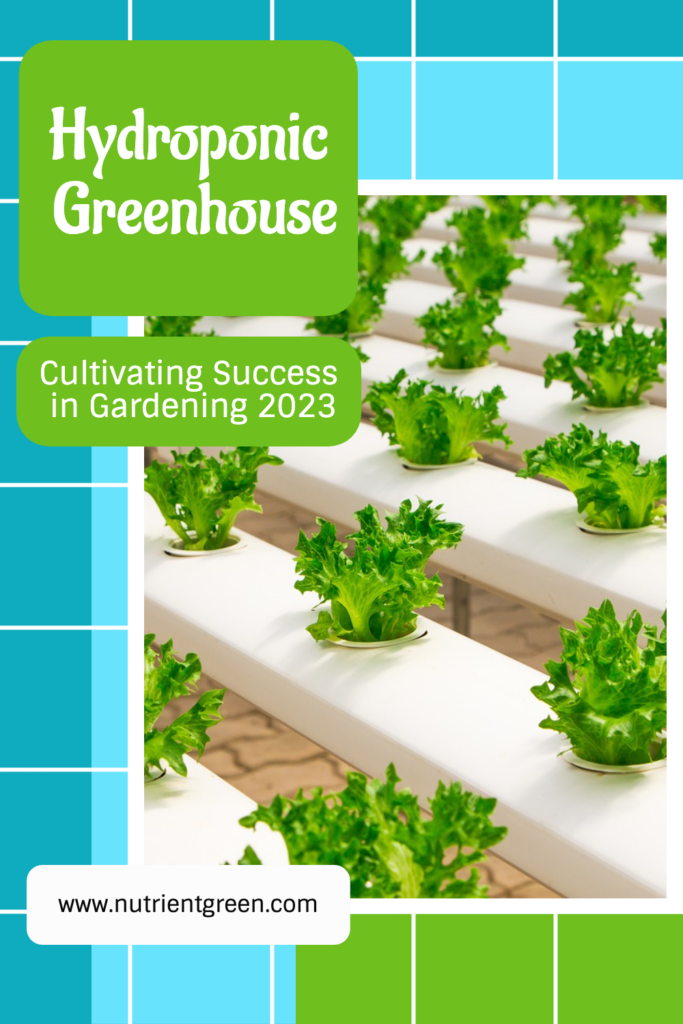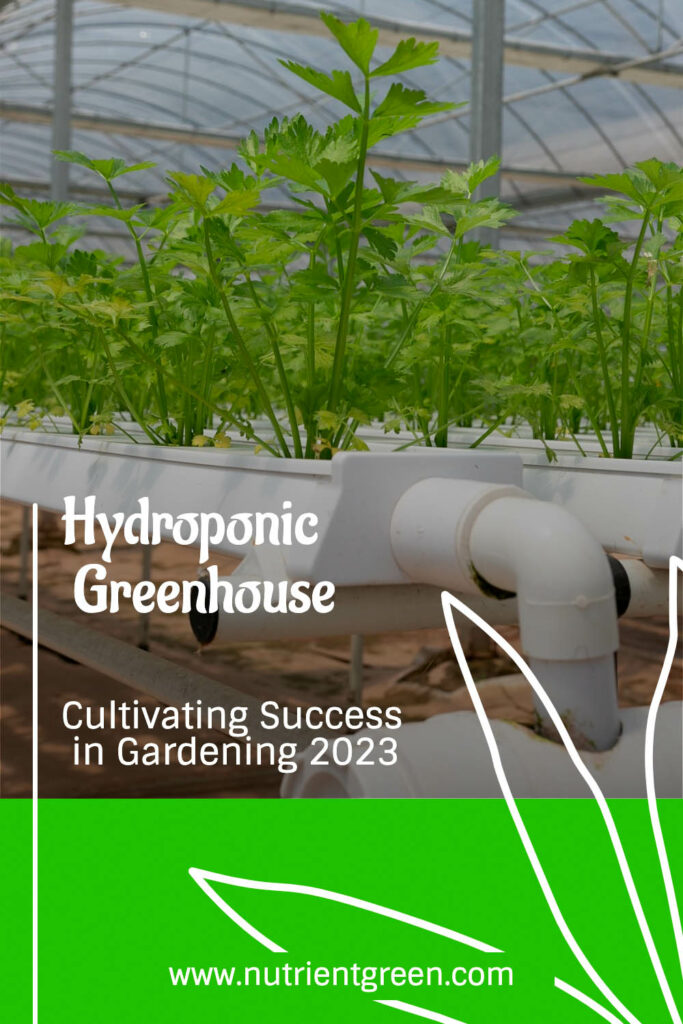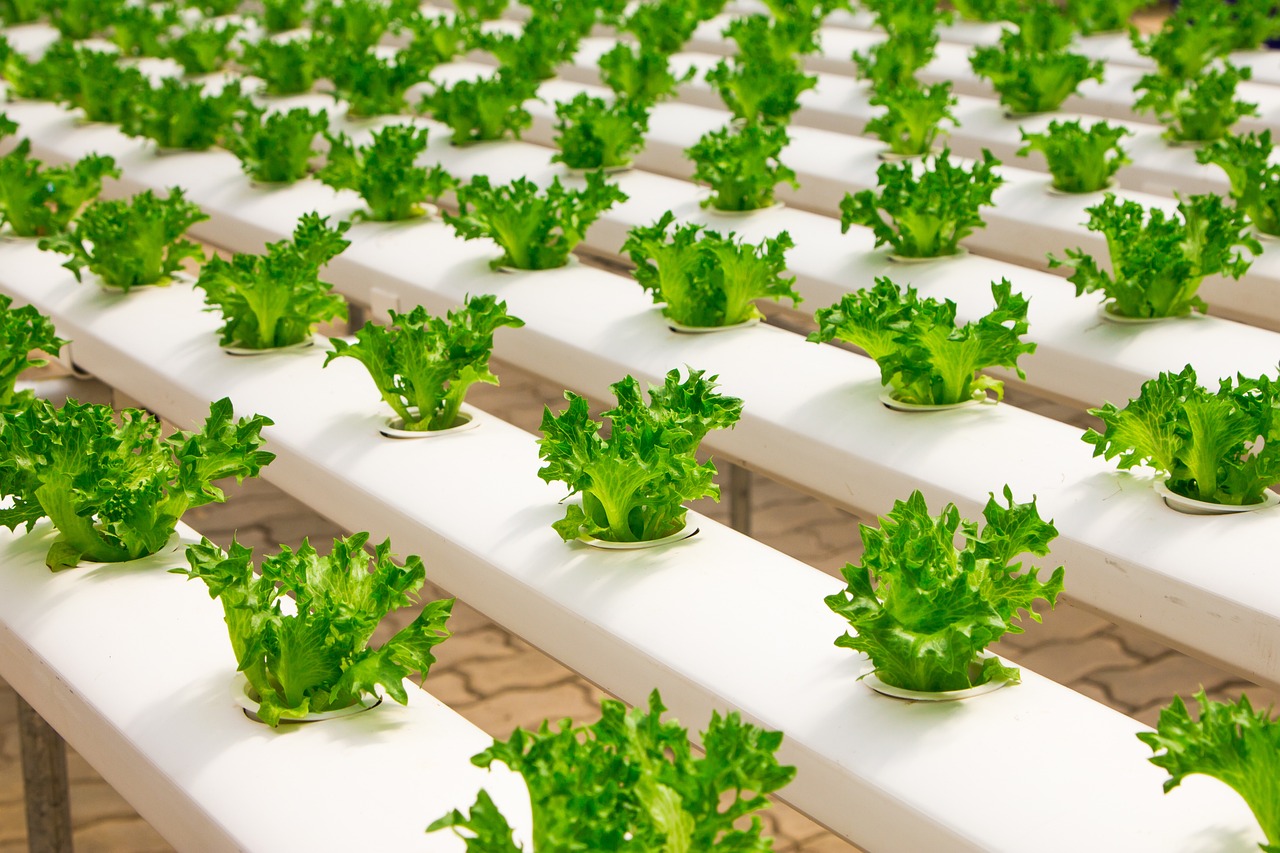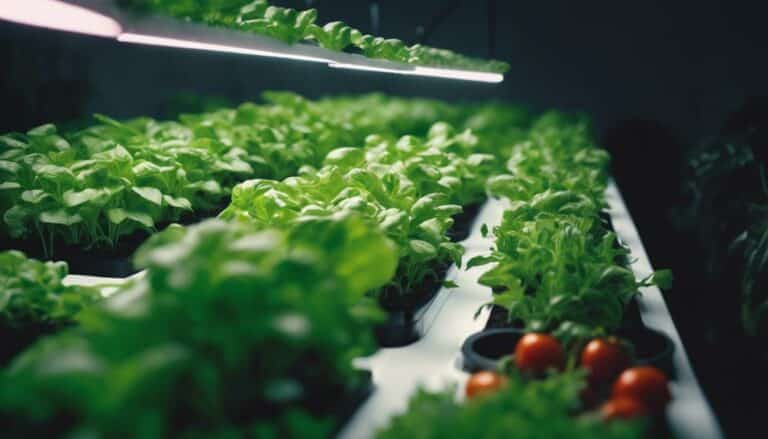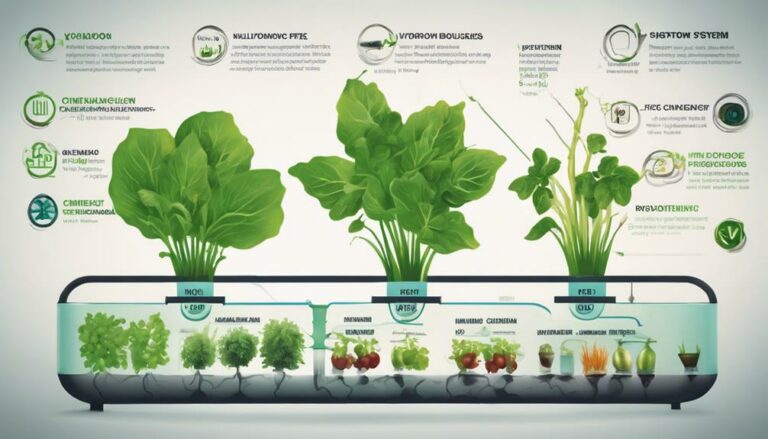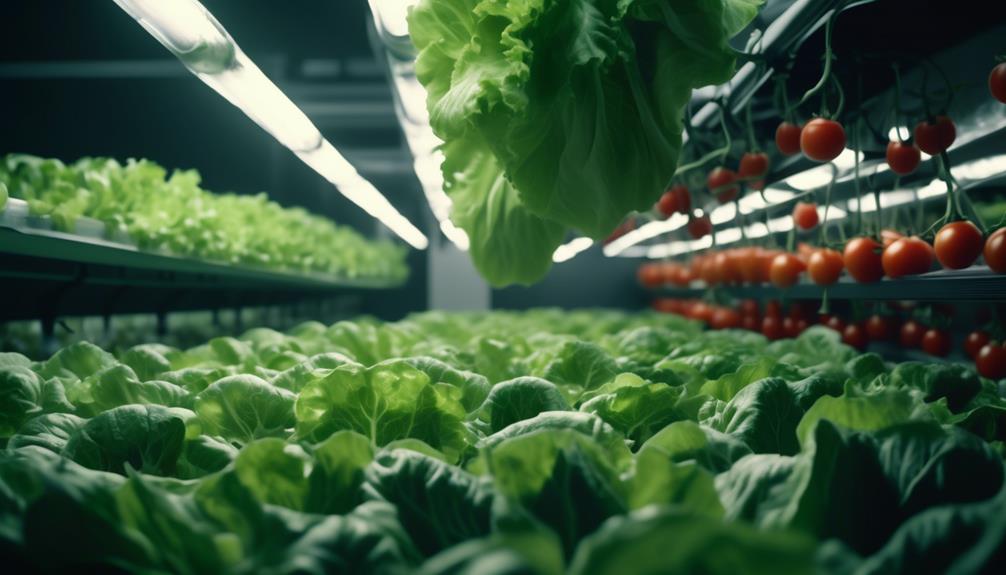Table of Contents
If you love gardening, you might be wondering if there is a way to grow your own food without relying on soil, weather, or pests. If you have limited space, water, or time, you might be looking for a more efficient and productive way to grow your own food. If you care about the environment, you might be looking for a more eco-friendly and sustainable way to grow your own food.
If you answered yes to any of these questions, then you might want to try a hydroponic greenhouse. A hydroponic greenhouse is a system that allows you to grow plants without soil, using water-based nutrient solutions instead. You can grow plants in a controlled environment inside a greenhouse, using various types of hydroponic systems. You can grow almost any type of crop in a hydroponic greenhouse, from leafy greens and herbs to fruits and flowers.
Introduction
In this article, we will show you how to start your own hydroponic greenhouse from scratch, using simple components that you can buy or make yourself. We will also share some benefits of a hydroponic greenhouse, some types of hydroponic systems, some tips and precautions for setting up and maintaining a hydroponic greenhouse, and some ideas for growing plants in a hydroponic greenhouse. By the end of this article, you will be ready to start your own hydroponic greenhouse project and enjoy the fruits of your labor.
Benefits of a Hydroponic Greenhouse
There are many reasons why you might want to try a hydroponic greenhouse. Here are some of them:
- It can save water. A hydroponic greenhouse uses up to 90% less water than traditional soil-based gardening. This is because the water is recycled and reused in a closed-loop system, where the excess water is collected and returned to the reservoir. The water is also delivered directly to the roots of the plants, where it is needed most, reducing evaporation and runoff.
- It can save space. A hydroponic greenhouse can produce more food per square foot than traditional soil-based gardening. This is because the plants can be grown closer together, without competing for nutrients or root space. The plants can also be grown vertically, using trellises or towers, maximizing the use of vertical space.
- It can save time. A hydroponic greenhouse can reduce the time and labor required for gardening. This is because there is no need to till, weed, or mulch the soil. There is also no need to worry about pests or diseases that can affect soil-grown plants. The plants can be harvested easily and quickly, without damaging the roots or disturbing the soil.
- It can produce higher yields and quality. A hydroponic greenhouse can increase the yield and quality of your crops. This is because the plants receive optimal amounts of water, nutrients, light, temperature, and humidity in a controlled environment. The plants can grow faster and healthier, producing larger and tastier fruits and vegetables.
Types of Hydroponic Systems
There are many types of hydroponic systems that you can use in your hydroponic greenhouse. Each system has its own advantages and disadvantages, depending on your budget, space, skill level, and crop preferences.
Here are some of the main types of hydroponic systems:
- Wick system: This is the simplest and cheapest type of hydroponic system. It consists of a reservoir filled with nutrient solution, a growing medium such as perlite or vermiculite, and wicks that connect the reservoir to the growing medium. The wicks draw up the nutrient solution from the reservoir to the growing medium by capillary action, providing moisture to the roots of the plants. This system is suitable for small plants that do not require much water or nutrients. However, it has some drawbacks such as poor aeration, uneven nutrient distribution, and risk of salt buildup.
- Deep water culture (DWC) system: This is one of the most popular types of hydroponic system. It consists of a reservoir filled with nutrient solution, an air pump that provides oxygen to the solution, an air stone that creates bubbles in the solution, and net pots that hold the plants above the solution. The roots of the plants hang down into the solution, absorbing water and nutrients directly from it. This system is suitable for fast-growing plants that require a lot of water and nutrients. However, it has some drawbacks such as high power consumption, high water temperature, and risk of root rot.
- Nutrient film technique (NFT) system: This is one of the most efficient types of hydroponic system. It consists of a reservoir filled with nutrient solution, a pump that circulates the solution through a network of pipes or channels, and net pots that hold the plants along the pipes or channels. The roots of the plants are exposed to a thin film of nutrient solution that flows continuously over them, providing water and nutrients constantly. This system is suitable for leafy greens and herbs that have small root systems. However, it has some drawbacks such as high maintenance, high sensitivity to power outages or pump failures, and risk of nutrient deficiency or toxicity.
- Ebb and flow system: This is one of the most versatile types of hydroponic system. It consists of a reservoir filled with nutrient solution, a pump that controls the flow of the solution, a timer that regulates the pump, and a tray that holds the plants in a growing medium such as gravel or rock wool. The tray is periodically flooded with the solution and then drained back to the reservoir, providing moisture and nutrients to the roots of the plants. This system is suitable for a variety of plants that can tolerate wet and dry cycles. However, it has some drawbacks such as high water consumption, high risk of leaks or clogs, and risk of algae growth or fungal infection.
- Drip system: This is one of the most common types of hydroponic system. It consists of a reservoir filled with nutrient solution, a pump that delivers the solution to the plants, a timer that regulates the pump, and drip emitters that drip the solution onto the base of each plant. The excess solution is either collected and reused or drained away. This system is suitable for plants that require constant moisture and nutrients. However, it has some drawbacks such as high maintenance, high risk of drip emitters getting clogged or damaged, and risk of salt buildup or root burn.
- Aeroponic system: This is one of the most advanced types of hydroponic system. It consists of a reservoir filled with nutrient solution, a pump that sprays the solution as a fine mist onto the roots of the plants, and a timer that regulates the pump. The roots of the plants are suspended in air, where they receive oxygen and nutrients from the mist. This system is suitable for plants that require high levels of oxygen and nutrients. However, it has some drawbacks such as high cost, high maintenance, high sensitivity to power outages or pump failures, and risk of root drying or infection.
Components of a Hydroponic Greenhouse
To set up and maintain a hydroponic greenhouse, you will need some basic components that are essential for any type of hydroponic system. Here are some of them:
- Greenhouse: This is the structure that provides protection and insulation for your plants from external factors such as weather, pests, and diseases. You can buy or build your own greenhouse according to your budget, space, and design preferences. You can also use an existing structure such as a shed or a garage as your greenhouse.
- Reservoir: This is the container that holds the nutrient solution for your plants. You can use any type of container that is large enough to hold enough solution for your plants and has a lid to prevent evaporation and contamination. You can also use multiple containers if you have different types of plants or systems.
- Nutrient solution: This is the liquid that provides all the essential nutrients for your plants. You can buy ready-made nutrient solutions from hydroponic suppliers or make your own using water and fertilizer-grade chemicals. You will need to measure and adjust the pH and electrical conductivity (EC) of your solution regularly to ensure optimal plant growth.
- Growing medium: This is the material that supports your plants in a hydroponic system. You can use various types of inert media such as perlite, vermiculite, rock wool, coconut coir, clay pellets, or gravel. You can also use no medium at all if you use an aeroponic or NFT system.
- Pump: This is the device that moves the nutrient solution from the reservoir to the plants or to an aerator. You can use submersible pumps or external pumps depending on your system design and preference. You will need to choose a pump that has enough power and capacity to deliver enough solution to your plants.
- Aerator: This is the device that adds oxygen to your nutrient solution to prevent it from becoming stagnant and anaerobic. You can use air pumps or water pumps to create bubbles or splashes in your reservoir. You will need to choose an aerator that has enough power and capacity to oxygenate enough solution for your plants.
- Timer: This is the device that controls when your pump or aerator operates according to your system design and preference. You can use mechanical timers or digital timers depending on your budget and convenience. You will need to set your timer according to your plant needs and environmental conditions.
- Lighting: This is the device that provides artificial light for your plants in case natural light is insufficient or unavailable in your greenhouse. You can use various types of lighting such as fluorescent lights, LED lights, high-intensity discharge (HID) lights, or metal halide (MH) lights depending on your budget, space, and plant needs. You will need to choose lighting that has enough power and spectrum to provide enough light for your plants.
- Ventilation: This is the device that provides air circulation and temperature control for your greenhouse. You can use fans, vents, windows, doors, or heaters depending on your budget, space, and climate. You will need to choose ventilation that has enough power and capacity to provide enough air flow and heat for your greenhouse.
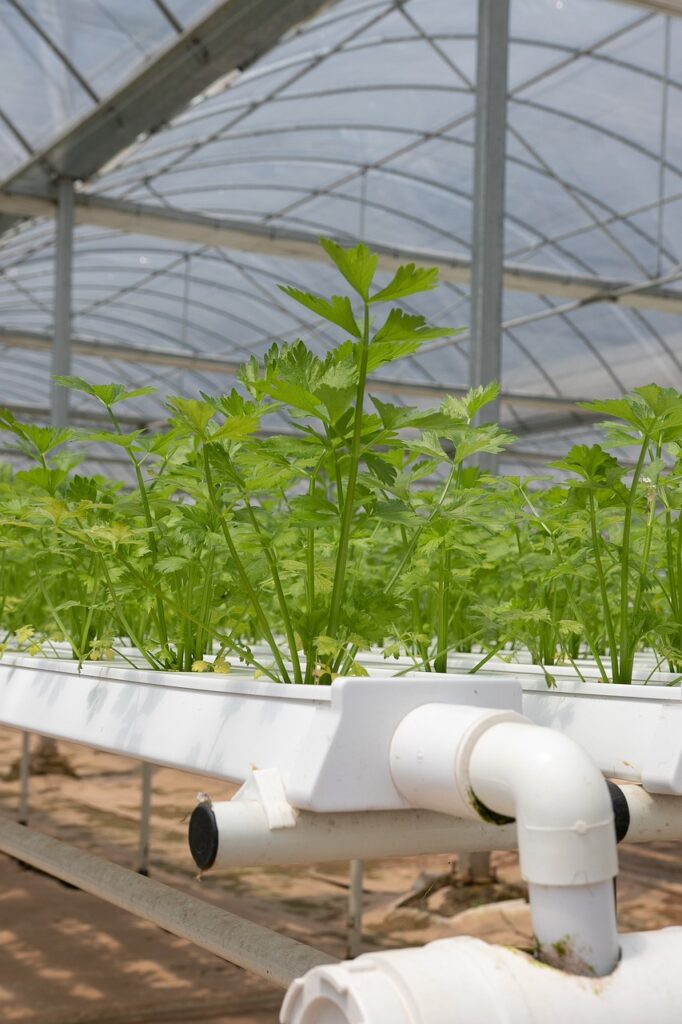
How to Start a Hydroponic Greenhouse
Starting a hydroponic greenhouse may seem daunting at first, but it is actually quite simple if you follow some basic steps.
Here are some steps you can take to start your own hydroponic greenhouse:
- Choose a location for your greenhouse. You will need a location that has enough space for your greenhouse structure and hydroponic systems, access to water and electricity sources, good drainage and ventilation options, and adequate sunlight exposure.
- Choose a type of hydroponic system for your greenhouse. You will need to consider factors such as your budget, space, skill level, crop preferences, maintenance requirements, and environmental conditions when choosing a type of hydroponic system for your greenhouse.
- Choose a type of greenhouse structure for your hydroponic system. You will need to consider factors such as your budget space, design preferences, and climate when choosing a type of greenhouse structure for your hydroponic system. You can buy or build your own greenhouse structure using various materials such as wood, metal, plastic, or glass.
- Choose the components for your hydroponic system and greenhouse structure. You will need to buy or make the components for your hydroponic system and greenhouse structure according to your chosen type and design. You will need to consider factors such as your budget, space, availability, and quality when choosing the components for your hydroponic system and greenhouse structure.
- Assemble and install your hydroponic system and greenhouse structure. You will need to follow the instructions and guidelines for assembling and installing your hydroponic system and greenhouse structure according to your chosen type and design. You will need to use tools and equipment such as drills, screws, nails, hammers, saws, scissors, tape measures, levels, pliers, wrenches, hoses, clamps, connectors, valves, etc. You will also need to test and adjust your hydroponic system and greenhouse structure for proper functioning and performance.
- Choose and prepare the plants for your hydroponic greenhouse. You will need to choose the plants that you want to grow in your hydroponic greenhouse according to your preferences, goals, and conditions. You will need to consider factors such as plant size, growth rate, nutrient requirements, light requirements, temperature requirements, humidity requirements, pest resistance, disease resistance, etc. You will also need to prepare the plants for your hydroponic greenhouse by germinating seeds or propagating cuttings in a suitable medium such as rock wool cubes or peat pellets.
- Transplant and maintain the plants in your hydroponic greenhouse. You will need to transplant the plants into your hydroponic system when they are ready according to their type and size. You will need to place them in net pots or baskets filled with a growing medium such as perlite or clay pellets. You will also need to maintain the plants in your hydroponic greenhouse by monitoring and adjusting the nutrient solution level, pH level, EC level, temperature level, humidity level, light level, etc. You will also need to prune and train the plants as needed to optimize their growth and yield.
How to Grow Plants in a Hydroponic Greenhouse
Growing plants in a hydroponic greenhouse can be fun and rewarding if you know what you are doing. Here are some ideas for crops that thrive in a hydroponic greenhouse:
- Leafy greens: Leafy greens such as lettuce, spinach, kale, chard, arugula, etc. are some of the easiest and fastest crops to grow in a hydroponic greenhouse. They can be grown year-round in any type of hydroponic system with minimal maintenance. They can be harvested multiple times by cutting off the outer leaves and leaving the inner ones to regrow.
- Herbs: Herbs such as basil, mint, parsley, cilantro, oregano, thyme, rosemary, etc. are some of the most flavorful and aromatic crops to grow in a hydroponic greenhouse. They can be grown year-round in any type of hydroponic system with minimal maintenance. They can be harvested multiple times by cutting off the stems and leaves and leaving the roots to regrow.
- Tomatoes: Tomatoes are some of the most popular and versatile crops to grow in a hydroponic greenhouse. They can be grown year-round in any type of hydroponic system with moderate maintenance. They can be harvested once they reach their desired size and color by cutting off the stems or picking off the fruits.
- Peppers: Peppers such as bell peppers, chili peppers, jalapeños, habaneros, etc. are some of the most colorful and spicy crops to grow in a hydroponic greenhouse. They can be grown year-round in any type of hydroponic system with moderate maintenance. They can be harvested once they reach their desired size and color by cutting off the stems or picking off the fruits.
- Strawberries: Strawberries are some of the most delicious and nutritious crops to grow in a hydroponic greenhouse. They can be grown year-round in any type of hydroponic system with moderate maintenance. They can be harvested multiple times by cutting off the runners and picking off the berries.
Conclusion
A hydroponic greenhouse is a smart and sustainable way to grow your own food without soil, indoors or out. You can enjoy the benefits of a hydroponic greenhouse such as saving water, space, and time, and producing higher yields and quality. You can choose from various types of hydroponic systems and components to suit your budget, space, skill level, and crop preferences. You can also grow a variety of plants in a hydroponic greenhouse, from leafy greens and herbs to tomatoes and peppers to strawberries and bananas.
If you are interested in starting your own hydroponic greenhouse project, you can follow the steps we have outlined in this article to set up and maintain your hydroponic greenhouse. You can also find more information and resources online or from local hydroponic suppliers or experts. We hope you have learned something new and useful from this article and that you will give hydroponic greenhouse gardening a try. You will be amazed by how easy and rewarding it is to grow your own food with hydroponics.
FAQs
How much does it cost to start a hydroponic greenhouse?
The cost of starting a hydroponic greenhouse depends on many factors such as the size, type, design, and location of your greenhouse and hydroponic system, the components and materials you use, the plants you grow, etc. A rough estimate is that it can cost anywhere from $500 to $5,000 or more to start a small to medium-sized hydroponic greenhouse.
How much space do I need for a hydroponic greenhouse?
The space you need for a hydroponic greenhouse depends on how many plants you want to grow and how big they are. A general rule is that you need at least 25 square feet of floor space for every 100 plants you grow. You also need to consider the height of your plants and your greenhouse structure, as well as the space for walking and working around your plants.
How often do I need to change the nutrient solution in my hydroponic system?
The frequency of changing the nutrient solution in your hydroponic system depends on factors such as the type and size of your system, the volume and concentration of your solution, the number and size of your plants, etc. A general rule is that you need to change the nutrient solution every two to four weeks. You also need to check and adjust the pH and EC levels of your solution daily or weekly.
What are some common problems or challenges with hydroponic greenhouse gardening?
Some common problems or challenges with hydroponic greenhouse gardening include power outages, pump failures, leaks, clogs, algae growth, nutrient deficiencies or toxicities, pests or diseases, etc. To prevent or solve these problems or challenges, you need to monitor and maintain your hydroponic system and greenhouse structure regularly, follow good hygiene practices, use quality components and materials, etc.
What are some tips or tricks for successful hydroponic greenhouse gardening?
Some tips or tricks for successful hydroponic greenhouse gardening include starting small and simple, choosing easy and suitable plants for your system and conditions, following the instructions and guidelines for your system and plants, experimenting and learning from your mistakes, seeking help and advice from online or local sources, etc. Most importantly, have fun and enjoy the process and the results of your hydroponic greenhouse gardening.
References
: https://www.sciencedirect.com/science/article/abs/pii/S0308521X17310338
: https://www.sciencedirect.com/science/article/abs/pii/S0308521X16303754
: https://www.sciencedirect.com/science/article/abs/pii/S0304423818304308
